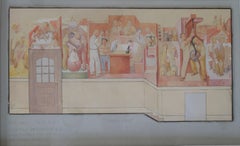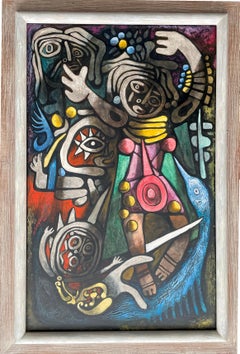Giglio Raphael Dante Art
Giglio Raphael Dante first studied at the Academy of Rome, before moving to the United States. He exhibited widely and with success, including at the Philadelphia Academy of Fine Arts (1934-36), the Golden Gate Exposition (1936) and the Santa Barbara Museum of Art (1954). He was also the subject of numerous prestigious one-man exhibitions, including at the Museum of Modern Art, New York (1954) and Art Institute of Chicago (1949), among others. Dante's work is held in the permanent collections of national and international museums, including the Boston Museum of Fine Arts, the Lawrence Museum and the Springfield Museum of Art.
1940s Modern Giglio Raphael Dante Art
Tempera, Paper
1930s American Modern Giglio Raphael Dante Art
Board, Egg Tempera
1940s Modern Giglio Raphael Dante Art
Masonite, Oil, Tempera
1940s American Modern Giglio Raphael Dante Art
Masonite, Oil, Tempera
Mid-20th Century American Modern Giglio Raphael Dante Art
Casein
1940s American Modern Giglio Raphael Dante Art
Masonite, Oil, Tempera
20th Century Modern Giglio Raphael Dante Art
Egg Tempera
Early 20th Century Modern Giglio Raphael Dante Art
Paper, Tempera
1930s Modern Giglio Raphael Dante Art
Linen, Egg Tempera, Board
1930s Modern Giglio Raphael Dante Art
Linen, Egg Tempera
1930s American Modern Giglio Raphael Dante Art
Tempera
Mid-20th Century American Modern Giglio Raphael Dante Art
Panel, Tempera
2010s Modern Giglio Raphael Dante Art
Mixed Media, Tempera, Board


